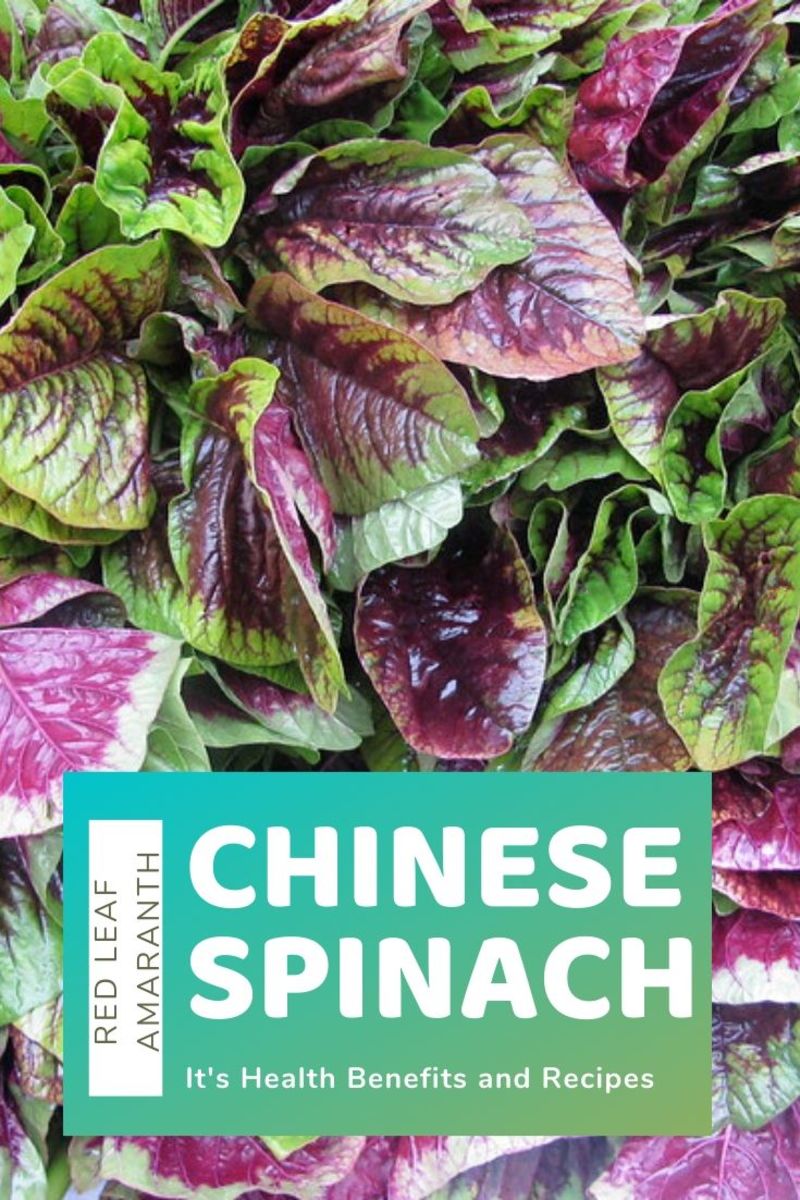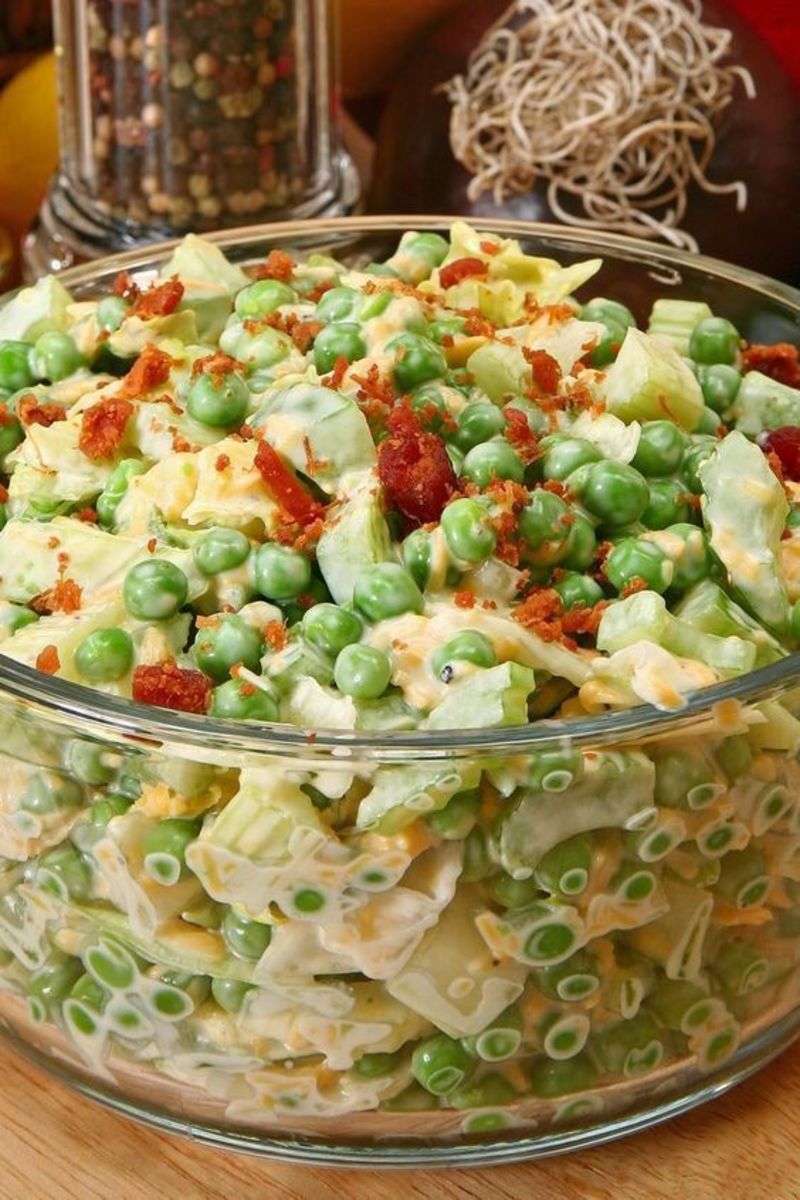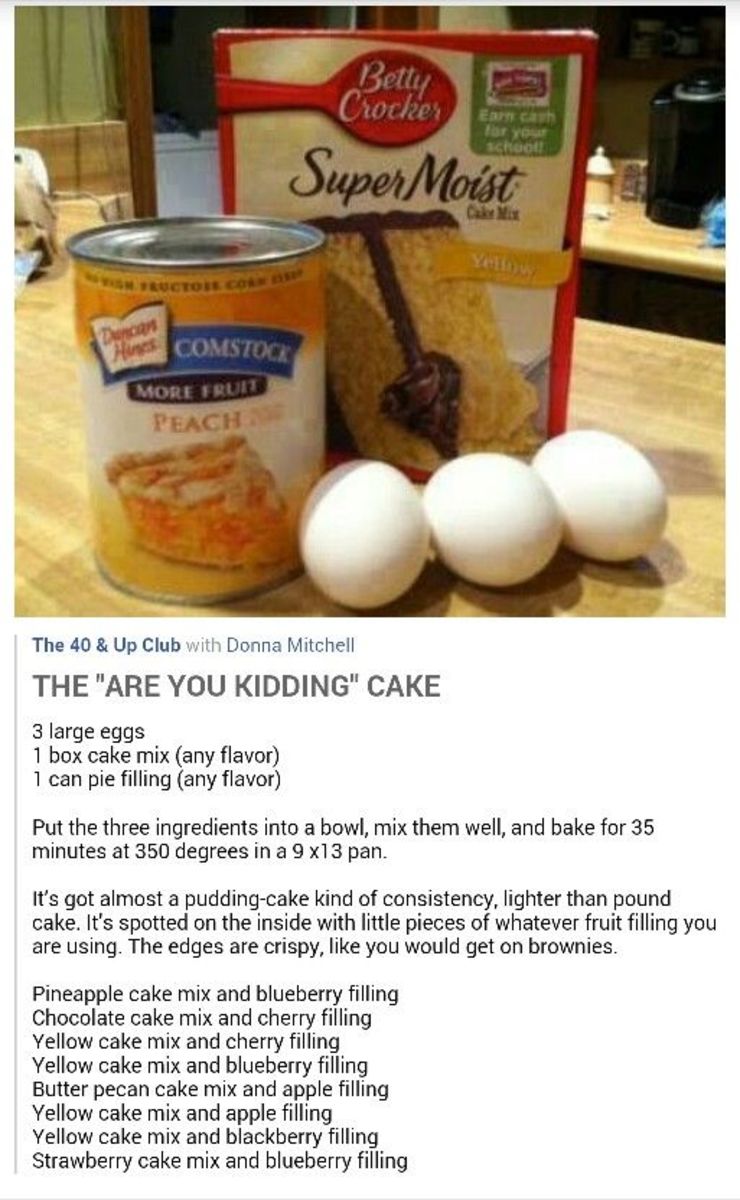Can It!
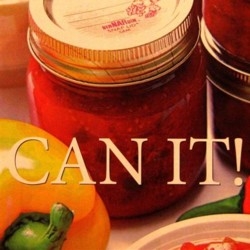
Can It Simple and Delicious
While we all love fresh fruits and vegetables, the sheer volume of the local bounty can be a bit overwhelming in the summer.
The farm markets are overflowing with piles of colorful peppers and tomatoes, peaches and plums. Our gardens are producing bumper crops of carrots, beets, cucumber and squash. Bargains abound, so it's the perfect time to pickle a peck of peppers or put up those juicy peaches to enjoy in the months ahead.
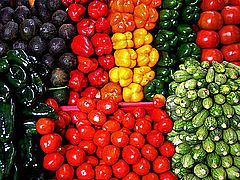
What Happens In Canning?
There's no special magic to canning. Fruits, vegetables, or meats are packed into canning jars, which are fitted with self-sealing lids and then heated. Sustained high heat kills dangerous organisms that could cause food spoilage in the jars; it also causes the gases in the food and in the jars to expand, driving out most of the air left inside. Hot jams, jellies, and other preserves are cooked first and then packed, hot, into hot jars.
When a jar cools, the vacuum created inside pulls the lid down against the jar mouth to make a tight seal. Unless the seal is broken, none of the organisms that cause spoilage can enter.

Make Canning Easier
It is very important to use the right equipment when you are canning; everything from the jars to the right kettle is crucial.
HINT: If you're a beginner and are starting out with nothing, consider sharing equipment expenses with a friend. You can take turns canning or - better still - can together.
Something To Cut Your Prep Time In Half
Chopping everything by hand isn't an option on my canning days. Now that I have my handy Cuisinart chopper I spend less time in the kitchen, get my canning done faster and have less mess to clean up.
Measurements are marked on the beaker that is included. This find this invaluable!
I love my Cuisinart!!
Have you?
Have you ever canned?

Another Essential You Will Need
You may already have this item, if not, I recommend you purchase it.
Potholders just won't do. For safety sake please get it before you start canning.
It's possible to preserve almost any fruit or vegetable for future use, but some take to canning better than others.
For low-acid foods or things like garden peas, roasted bell peppers, corn and fresh berries, freezing may be the best process for preservation.
Think about canned fruits, pickled cucumber or beans, canned tomatoes or tomato sauces and salsa, and any kind of relish or chutney that uses plenty of sugar or vinegar in the mix. Then make sure to start with the finest fresh ingredients you can find.
This is not the time to salvage bruised apples or moldy blueberries. The "garbage in, garbage out" adage applies when it comes to canning, and in the interest of food safety, it's always smart to start with clean, ripe and unblemished produce.
That said, it is possible to create a silk purse with your canning kettle, even if you are stuck with green tomatoes or a mountain of oversized zucchini.
I Use The Open Kettle Method
Safe tomatoes if you follow these directions!
Safety is crucial in canning. In general, there are three methods of canning - open kettle canning, the water bath method and the steam pressure method. In later lenses, detailed step-by-step canning directions will be given for vegetables, meat and fish, as well as for jam, jelly, and pickles.
Here I will be showing you how my great-grandmother, grandmother , mother, myself and now my daughter (5 generations) have canned our tomatoes. Not with the hot water method as recommended by most but using the open kettle method.
By using this method the ingredients have a better chance of melding and certainly taste better than when using the other method.
Step #1
~ Get out the stock pot, jars (discard any that have nicks or cracks), lids (they must be new), ring bands, and other items listed under "Equipment Needed."
~ Be sure all equipment is clean and ready to use.
~ Scald lids in boiling water: keep in very hot water until time to use.
~ Scald jars and place upside down on a clean towel.
Step #2
~ Fill a medium sized pot with water and bring to a boil.
For tomatoes follow my directions below, prepare only enough for one canner load at a time. (7 quarts)
~ Use only ripe/sound tomato, onions and zuchinni and use fresh parsley.
~ Wash and prepare the fruit and vegetables.
~ Chop onion into very small pieces. (I use a stick hand blender making this a no-tears job.)
~ Peel and chop zucchini into small cubes.
~ Chop parsley until very fine. (Basil and oregano may also be added.)
~ Place these three ingredients into your stock pot with a small amount of water and simmer for appoximately 10 minutes or until the zucchini turns transparent. Be careful not to let it burn.
Now for the tomatoes
~ Score tomatoes on the bottom or prick with a fork.
~ Dip tomatoes in hot, hot water. (I usually start out with the water boiling.) Leave in hot water until skins start to pull away from the fruit. (Approx. 1 minute)
~ Take out of the water with a slotted spoon (If you have a blanching basket, all the better).
~ Immerse tomatoes in cold water and then place in the colander to drain.
~ Remove core and skins and chop into large chunks. (I use the seeds also.)
~ Place tomatoes into pot with onions, etc. and stirring it, bring it all to a boil.
~ Lower temp. and allow to simmer until tomatoes are cooked.
~ Salt it to taste.
When all is cooked keep it hot, HOT!
~ Boil lids for 5 minutes.
~ Place all your jars and rings near the stove.
~ Use a small pot to carry the jar up to the rim of the stock pot to fill.
~ Fill the jar with boiling hot tomatoes, leaving 1/4-inch head space.
~ Run a narrow spatula (or a table knife) gently around the jar between the food and jar sides to release any bubbles: add more liquid if necessary.
~ Wipe jar rim with a damp cloth or damp paper towel to remove any food particles that might prevent a seal.
~ Lift a jar lid from the boiling hot water and place it on jar. Screw ring band on by hand; tight but not overtighten. This is tricky at first ... but you'll get it right in no time.
~ Place full jar on a clean towel, out of a draft and let it cool.
~ Repeat with remaining jars.
Shhh, Listen :
You'll hear the wonderful "POP" as each jar seals. Music to the ears!
**Many thanks to Will Borden's Galleries
for taking the photos for this lens.
Adjust For Altitude
Adjust for every 1,000 feet above sea level that you live to kill off spoilers:
~Sterilizing jars: Boil for 10 minutes, plus 1 min.
~Processing in boiling water for 20 min or less: Increase by 1 min.
~Processing in boiling water for 20 min or more: Increase by 2 min.
Canning Tomatoes Using The Hot Water Bath Method. - Canning Tomatoes, Tomato Sauce & Salsa
Here's another method used to can tomato sauce and salsa, plus instructions on how to can whole or crushed tomatoes. The video podcasts are to be used with detailed instructions and recipes on CanningUSA.COM The video teaches how to home-can delicious, ripe and red summer tomatoes whole, diced or in your favorite tomato sauce!
I don't mind leaving the seeds in.
The Hot Water Bath Process
Method Used in the above video.
Heat-processing is the most important part of successful home canning - boiling jars of prepared food for specific times to ensure that a vacuum is created to properly seal the contents inside, and kill microorganisms that can cause spoilage. This is what makes canned food shelf stable at room temperature for months, and even years. (I do have a cool storage room for my canning though.)
It's also vital to follow up-to-date published recipes to the letter. Without the right amount of sugar or acidity in the mixture, you risk dangerous spoilage, and even deadly botulism. So don't be tempted to cut back on the sugar or vinegar, or try to bottle meats or fish at home. Stick to the recipes and follow the processing guidelines.
Fill the jars, leaving 1\4-inch headspace, then wipe the rims clean, top jars with snap lids and screw bands tight.
To process and seal the contents, the jars are lowered into a deep kettle of rapidly boiling water (deep enough to submerge the tops by an inch or two), set on a rack and boiled (processed) for the time specified in the recipe.
Make sure to use the same size of jars that the recipe specifies - changing the jar size changes the processing time.
A good canning book, like "Canning Freezing & Drying - A Sunset Book" is essential.

My Recommendation - The Best of the Best
I bought this book new many years ago and have used it so much that it is now in tatters. I was so pleased to find it still available and at a bargain price. This book has some of the most unusual and delicious recipes for jam, jelly, preserves and drieds. The Sunshine Preserves on page 33 are especially good and you let them "cook" outside on a hot day! They taste fresh and the fruit plumps up in the syrup. The fruit newton bar recipe is hard to find anywhere else and with a little tweaking, makes a great cookie. The sugared orange shell and orange marmalade make a pretty and elegant gift and are fun to fix. The brandied fruit recipes...well, if you make them and give them as gifts, expect to be bugged for more the next year! I learned how to smoke meat from this book, too.
Do you can tomatoes for your family because they are better than "store bought"?
Do you taste the difference? - Is there any difference in the taste?
For years I have been canning and eating home grown tomatoes. I love them and my family love them. In my opinion nothing you can buy compares to the quality and taste. Now, I'm asking you.
The latest canning recommendations are based on the 2006 revision of the USDA Complete Guide to Home Canning.
Two of the recommendations involve new waiting time recommendations. These new waiting time recommendations were added to improve lid performance and reduce sealing failures. These directions should be added to canning procedures for all products.
1. In 2006, water bath canning directions were updated, advising consumers to "Wait 5 minutes before removing jars" to be consistent with a major canning lid manufacturer's advice based on their research on lid functioning and seal formation. (When using a boiling water canner: "After jars have been processed in boiling water for the recommended time, turn off the heat and remove the canner lid. Wait 5 minutes before removing jars from the boiling water bath canner.")
2. Also in 2006, pressure canning directions were updated advising consumers to "Wait 10 minutes, unfasten the lid, and remove it carefully" to be consistent with a major U.S. pressure canner manufacturer's advice, as well the advice from the major U.S. canning lid manufacturer. (When using a pressure canner:) "After the canner is completely depressurized, remove the weight from the vent port or open the petcock. Wait 10 minutes; then unfasten the lid and remove it carefully."
WHAT ABOUT THE DANGERS OF CANNING?
Botulism
Nearly everyone has heard about a deadly form of food poisoning called botulism. It is a type of food spoilage that usually occurs in low-acid foods. The organisms that cause it have some peculiar characteristics: they thrive without air in sealed jars, can't be destroyed by being processed at the temperature of boiling water (212 degrees F.) in a reasonable amount of time, and can't be easily detected when a jar is opened.
Through botulism doesn't occur in acid foods such as tomatoes (except low acid tomatoes) and other fruits, it can occur in virtually all vegetables, meat, poultry, and fish. That is why these foods must always be processed at 240 degrees F in the steam pressure canner.
Other types of food spoilage that might occur if jars of food aren't sealed properly are more easily detected. If the food smells bad or is soft, discolored, or moldy, discard it without tasting it.
If in doubt, throw it out!

THE EMBELLISHMENTS
Your grandmother might have stuck to basic pickled cucumbers and beets, but you can find all kinds of creative new recipes for making chutneys, spicy salsas and preserved fruits at home.
Every culture has its preserving traditions, from *Moroccan salted lemons to *Hungarian pickled peppers, Chicken Scallion Yakitori and Miso Soup. Start with simple fruit jams, then get creative with mustard pickles, spicy chutney or pickled asparagus and herb-infused wine jelly.
Soon you'll have a collection of glistening jars in the pantry, homemade condiments for daily dinners or holiday gifts.
* Recipes provided below.
Preserved lemons is the secret ingredient in many Moroccan meals - the je ne sais quoi, the dose of Moroccan mystery.
It has been secretly used a whole lot in salmon, olive stew, salade cuite, and in vegetarian chickpea tagine.
To me, preserved lemons are the premier secret ingredient in North African cuisine.
Their taste is a bit tart, yes, but it is intensely lemony and different from using just juice and zest. The lemons are preserved whole-flesh, pith, and zest - by being packed in salt and their own juice for a month. The result is small, round, yellow lemons (you generally start with the smallest, roundest ones) that are soft and entirely edible, although I still remove the seeds. I think it is the pith and the skin that make them taste more like lemon than any lemon you've ever had. To use them, you can slice or dice as you wish - just be sure to give them a quick rinse. And if you want to tone down their flavor, blanch them for 30 seconds to a minute in boiling water.
If you don't want to make them yourself they are not hard to find. There they'll be, bobbing like apples at a country fair at the Whole Foods Mediterranean Market - the first place to check. You can also order them from Amazon.
They are very easy to make following a process similar to this one I have given you. If you do make them yourself, you can use Meyer lemons or regular lemons and spice them however you like.
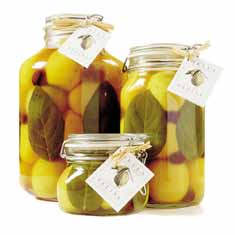
Moroccan Preserved Lemon Quarters
A Traditional Condiment
In Morocco, salted lemons are a staple of every kitchen. This traditional condiment is a newcomer to the American culinary scene.
There are many variation of this recipe - ranging from simple salt and lemons through to a variety of added spices. The recipe here is the one I have used for years,
The lemons last for about one year. If they get a white jelly-like substance after a few months... don't worry. The lemons will still be fine.
Remember to rinse them well before using. This is important as they can be far too salty if you forget to do this.
If you are doing a large leg of lamb, consider using the entire preserved lemon (after rinsing).
CANNING RECIPE:
1. Take each lemon and slice it in four, but without making the cut all the way through. Then, holding the lemon open, coat each portion with salt. I know this sounds strange, but iodised salt is best as lack of iodine is causing problems world wide and a lot of so-called fancy salts lack iodine.
2. Place a tablespoon or so of salt in the bottom of a clean preserving jar and place the lemons in - squashing them down as you go. As you fill it up, add a couple more tablespoons of salt.
3. Now - for added flavour try adding a couple of cinnamon sticks, four or five cloves, a sprinkle of coriander seeds, a couple of bay leaves and eight or nine black pepper corns.
4. Next, fill the jar to the top with lemon juice and seal tightly. Leave it in a mildly warm dark space for about five or six weeks. Turn the jar upside down .. then right side up every few days.
Once you open it, keep it in a refrigerator or very cool space. You can add a new lemon plus salt and juice from time to time.
Yield: 4 servings
MMMMM
Hot Hungarian Pickled Peppers - Beautiful to look at .. delicious to eat!
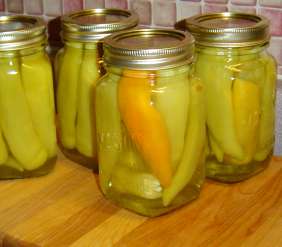
CANNING RECIPE:
4 quarts Hungarian or Banana peppers
1 ½ cups pickling salt
4 quarts water
10 cups 5% vinegar
2 cups water
¼ cup sugar
2 cloves garlic
~ Cut 2 small slits into each pepper
~ Dissolve the pickling salt 4-quarts of water
~ Pour over peppers in a large bowl or pot
~ Weigh down with a seal tight bag full of water in it to keep peppers submerged
~ Let stand 12-18 hours in a cool place
~ Drain, rinse and then drain thoroughly again
~ Combine remaining ingredients in a medium saucepot; simmer for 15 minutes
~ Remove garlic
~ Pack peppers in hot jars leaving ¼" headspace
~ Ladle hot liquid over peppers leaving ¼" headspace
~ Remove air bubbles with a non-metallic utensil
~ Put on lids
~ Process 10 minutes in a boiling-water canner
GREEN TOMATO RELISH
8 green tomatoes
1 red pepper
1 yellow pepper
4 onions
1 1/3 C. white sugar
1 1/3 C. vinegar
1 1/3 Tbsp. salt
2 Tbsp. celery seed
1/3 Tbsp. turmeric
~ Grind tomatoes, peppers and onions.
~ Put in a cheesecloth-lined colander and drain overnight.
The next day:
~ Combine vegetables and all other ingredients.
~ Bring to a boil and cook for 15 minutes.
~ Pour into jars and seal using the Hot Water Method.
I like to make this relish because my family all tell me it's the best relish around! I also like to take a jar of it as a gift for our hostess when we're invited out to eat.

Canning Equipment - The essentials
A guest has requested my recommendation as to where they should buy canning utensils. I am recommending Amazon. If you live in Canada make sure you order it from www.@Amazon.ca because sometimes the shipping and border fees will be added if ordered from USA . If you live in the USA, order it from www.@Amazon.com, of course.
Canning Jars
Canning jars come in different sizes and shapes. The wide-mouthed ones are most convenient for packing large pieces of food such as pickles.
Small jars are good for jams, jellies or individual servings. Special fancy jars with brightly colored lids are available just for jelly-making.
Another Challenge Met!
YEAH!
This page was made to meet the challenge of Carol Fisher for the Weekly Challenge - August 9 to 15th. Topic: Fall - Season of Mellow Fruitfulness
I hope that you will find this page "CAN IT!" useful, informative and entertaining.

You Made My Day
This page was awarded a purple star.
Purple Star?
According to the Purple Star Program:they are awarded to pages that are:
"Masterpiece lenses.
Lenses making a name for themselves.
Lenses trying new things."
What an honor!
An Added Bonus!
This Squidoo lens got LotD
Lens of the Day
September 23, 2011
Thank you SquidTeam!
LaraineRose
You Can make a page like this.
Be careful, you may earn money if you do!
If you are interested in learning how to publish a page like this, it is really quite easy. Just open a free account and start your own hub page on a topic of your choice.
You get assistance from others when you ask for help and there is a lot of information on tap to help you make your pages fabulous, addictive and fun.
Come give it a try.
**If you have enjoyed this page, please take a moment to "Like, Twitter and Facebook" this page at the top.
Have you a favorite canning recipe?
Maybe you don't can .. do you like eating home-canned peaches .. or what? Please leave a comment.

